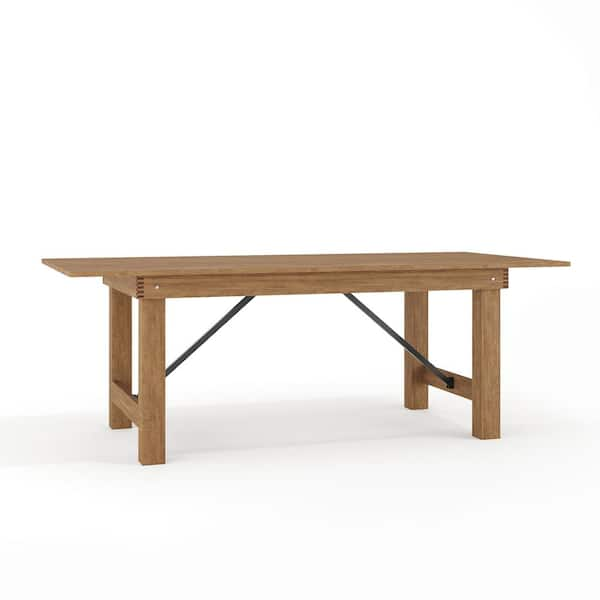Sturdy and Elegant Selections for Durable Dining Table Legs Wood Solutions
Sturdy and Elegant Selections for Durable Dining Table Legs Wood Solutions
Blog Article
Discovering the Various Sorts Of Table Legs Timber for Your Dining Space
The choice of dining table legs timber can greatly influence both the visual and practical high qualities of your eating room. Solid wood choices, such as oak and walnut, provide a traditional appearance with unequaled longevity, while engineered wood options supply innovative layouts that mimic the splendor of all-natural grains.
Strong Wood Options

Unlike engineered products, solid wood is much less susceptible to warping and damages over time when correctly preserved. Each item of strong wood is one-of-a-kind, showcasing specific qualities that include to the beauty and personality of the eating table.
Furthermore, solid wood can be finished in countless ways, ranging from natural oils to tarnished coatings, enabling homeowners to customize their furnishings to match their style. In recap, picking solid timber for eating table legs not just ensures architectural stability however also improves the aesthetic charm of the dining location, making it a beneficial financial investment for any type of home.
Engineered Wood Alternatives

Plywood, created from numerous layers of timber veneer, is steady and especially solid, making it an outstanding option for eating table legs. Its split make-up permits it to endure adjustments in moisture and temperature level better than conventional strong wood. MDF, on the other hand, provides a smooth surface for painting or veneering, enabling designers to achieve a refined appearance while maintaining architectural stability.
Particleboard, commonly utilized in economical choices, provides respectable strength and is light-weight, making it simpler to take care of. Nevertheless, it may not be as long lasting as plywood or MDF. When selecting crafted timber alternatives, it is necessary to take into consideration the designated usage and desired visual. These products not just enhance the performance of eating spaces yet also enable better design versatility, ensuring that traditional and contemporary styles can exist together sympathetically.
Reclaimed Timber Includes
Redeemed timber supplies an one-of-a-kind mix of sustainability and personality, making it a significantly preferred selection for eating table legs. Sourced from old barns, manufacturing facilities, and other structures, reclaimed wood embodies a background that brand-new materials simply can not replicate. Each piece lugs its very own tale, marked by unique flaws, knots, and varying grain patterns, which add to a table's unique visual allure.
In enhancement to its aesthetic appeal, reclaimed timber is an eco-friendly option. By repurposing formerly made use of materials, it reduces the need for brand-new lumber, therefore assisting to decrease and preserve forests waste. This aligns with an expanding consumer choice for lasting practices in home furnishings.
Additionally, redeemed timber is frequently more sturdy than recently harvested timber because of its age. The all-natural drying process that redeemed wood undergoes outcomes in a denser and more powerful product, making it much less susceptible to bending and splitting. This enhances the long life of dining tables, enabling them to endure the roughness of daily usage.
Softwood vs. Hardwood
When selecting dining table legs, comprehending the distinctions in between softwood and wood is essential for accomplishing both visual and useful goals. They normally show an even more rustic appearance, making them suitable for country-style or laid-back dining areas.
On the other hand, woods, sourced from deciduous trees like cherry, oak, and maple, are renowned for their thickness, toughness, and sturdiness. The elaborate grain patterns and rich shades of hardwoods offer a ageless and advanced charm, making them optimal for official dining settings. While woods often tend to be extra pricey and larger, their strength versus deterioration typically validates the investment.
Ultimately, the option between softwood and hardwood for dining table legs need to straighten with your layout vision, use requirements, and budget, guaranteeing that your dining space reflects your individual design while staying functional over time.

Treatments and surfaces
The aesthetic appeal and longevity of table legs can be considerably improved with different finishes and treatments. These procedures not just shield the timber from damages yet also elevate its appearance, permitting it to enhance varied interior styles.
One usual therapy is tarnishing, Resources which passes through the timber and improves its natural grain while adding shade. Discolorations give an abundant, stylish look, enabling homeowners to match their furniture with existing design. On the other hand, clear surfaces such as polyurethane or varnish produce a protective layer without modifying the timber's original tone, making certain longevity versus deterioration.
Additionally, all-natural oils, like tung or linseed oil, nourish the wood and supply a subtle sheen, all while being green. These oils permit the try here surface to take a breath, stopping wetness buildup and possible warping.
For those looking for a rustic charm, troubled or weather-beaten surfaces can be used to produce an aged appearance, adding personality to the piece. Inevitably, the option of coatings and treatments relies on personal choice, desired appearances, and the certain wood type, making it essential to take into consideration these elements when choosing eating table legs for your area.
Verdict
Solid woods, engineered options, and recovered choices each deal unique benefits, providing to different choices and demands. Inevitably, the selection of timber kind need to straighten with wanted design, durability, and environmental considerations, boosting the total eating experience.
The selection of eating table legs timber can exceptionally affect both the practical and aesthetic qualities of your dining room - Dining Table Legs Wood. Strong timber useful site choices, such as oak and walnut, offer a traditional look with unparalleled durability, while crafted timber options provide innovative designs that resemble the splendor of natural grains. Solid timber uses an ageless quality that can elevate the overall style of a dining room. Each item of solid timber is special, showcasing individual characteristics that include to the appeal and character of the eating table
Additionally, reclaimed timber is typically much more sturdy than recently harvested timber due to its age.
Report this page